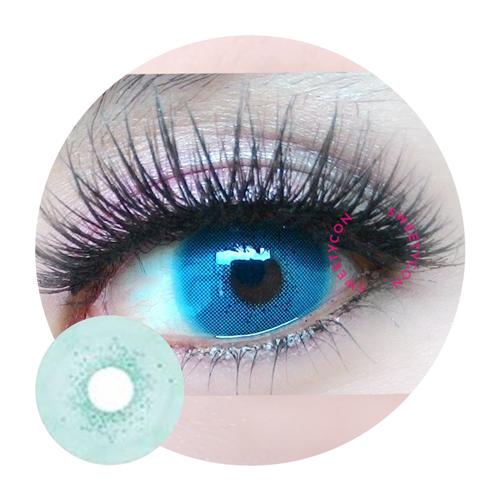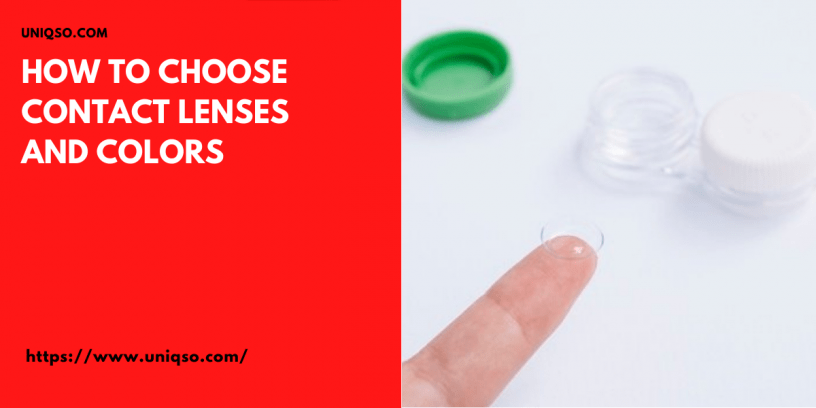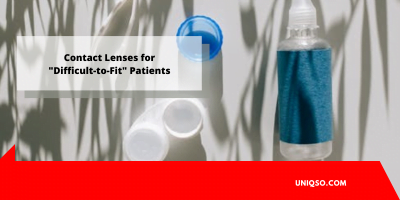The majority of coloured contact lenses are meant to resemble the natural appearance of the iris, the coloured portion of the eye.
Because this area is made up of colourful forms and lines, some colour contacts include a sequence of small coloured dots as well as radially distributed coloured lines and shapes to make the lenses appear more natural on the eye.
The centre of the lens, which lays above your pupil, is clear, allowing you to see.

Color contacts are available in three different tints:
- Tint for visibility
A faint blue or green tint is generally applied to a lens to assist you see it easier during insertion and removal, or if you drop it. Visibility tints are very light and have no effect on the colour of your eyes.
- Tint for enhancement
This is a transparent (see-through) solid tint that is somewhat darker than a visibility tint. An enhancement tint, as the name suggests, is intended to enhance the natural colour of your eyes. Colored contacts with this sort of hue are often suitable for persons who have light-colored eyes and wish to intensify their eye colour.
- Tint that is opaque
This is a non-transparent tint that may entirely change the colour of your eyes. If you have dark eyes, you will require this sort of colour contact lens to modify the colour of your eyes.
Color contacts with opaque tints are available in a number of colours including hazel, green, blue, violet, amethyst, brown, and grey. Opaque colour tints can also refer to costume or theatrical contact lenses. These special-effect contact lenses, which have long been employed in movies, are now readily available to the general public.
Selecting the Best Color Contact Lenses
The optimum contact lens colour for you is determined by a variety of factors, including your hair colour and skin tone.
However, the ideal colour and pattern to pick ultimately depends on the aesthetic you want to create – subtle and natural-looking or bold and adventurous.
- Color contacts for light-colored eyes
If you want to improve your look in a more subtle way, consider using an enhancement tint that defines the borders of your iris and intensifies your original colour.
If you want to try out a new eye colour while still seeming natural, pick grey or green contact lenses, for example, if your natural eye colour is blue.
Those with naturally light-colored eyes and a cool complexion with blue-red overtones may pick a warm-toned contact lens, such as light brown, for a striking new appearance that everyone recognises right away.
- Color contact lenses for dark eyes
If you have dark eyes, choose for tints that are opaque in colour. Try a lighter honey brown or hazel coloured lens for a more natural-looking transformation.
If you truly want to stand out, use contact lenses in vibrant colours like blue, green, or violet. Furthermore, if you have a dark complexion, bright-colored glasses might give you a striking impression.
- Custom-colored contact lenses
Some contact lens manufacturers specialise in developing bespoke colour tints for both prescription and non-prescription contact lenses if you want a completely unique look.
Tints are manufactured to order from a selection of colours in varied densities. Customized colour lenses are often semi-translucent, giving them a natural appearance. They can even conceal a congenital eye abnormality or an eye injury, or they can simulate the look of a healthy pupil.
Custom-colored contacts aren’t just for show. Professional athletes are increasingly using colour tints to improve their visual performance.
The primary advantages of “sport tint” contact lenses are decreased glare, increased contrast sensitivity, and greater depth perception. A green tint, for example, can help a tennis player see the ball on the court more clearly.
Dos and Don’ts of Color Contact
- DO NOT Share YOUR CONTACT LENSES.
Never, ever, ever exchange colours with your buddies, no matter how much fun it may sound. Contact lenses are medical devices that are custom-fit to each wearer’s eyes. Exchanging lenses can potentially spread hazardous germs, resulting in a severe, vision-threatening eye infection.
- DO take adequate care of your contact lenses.
To avoid contamination, colour contact lenses, like clear contact lenses, must be cleaned, disinfected, and kept using the necessary lens care supplies. Also, remember to update your lenses as directed by your eye care provider.
- If your eyes get uncomfortable, inflamed, or red, do not wear your contacts.
This might be a sign of a contact lens-related eye infection or another significant issue. If you have pain while wearing contact lenses or afterward, call your eye doctor right once.
- Have some fun with your new appearance!
Colored contacts allow you to have the eye colour you’ve always desired, whether you want to enhance your natural eye colour or create a stunning new look.
Color contact lenses are becoming increasingly popular, and there is an ever-expanding range of colours and effects to pick from. Consult with your eye doctor to discover coloured contacts that are both pleasant to wear and best compliment your personality and intended appearance.
For more information about Lightest Blue Contacts, please visit https://www.uniqso.com

